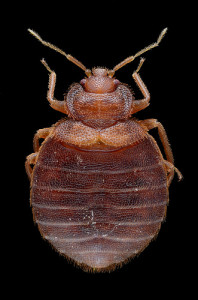Do We Really Have More Bed Bugs in the Northeast?
By Chris Williams on January 8, 2015.

Do bed bugs like Boston more than Atlanta or Miami?
 When bed bug expert Jeff White tweaked national bed bug incidence data, he was surprised to find that there were three times the number of bed bug-infested cities in the North as there were in the South. What gives?
When bed bug expert Jeff White tweaked national bed bug incidence data, he was surprised to find that there were three times the number of bed bug-infested cities in the North as there were in the South. What gives?
If you’ve ever seen pest control giants Orkin and Terminix’s annual reports on the most bed bug-infested cities, you know that certain cities, and even certain regions, are hit more heavily than others. But it seems to be a fluid thing. The number one bed bug city one year is down to number twelve the next year.
Southern Cities Should Have More Bed Bugs
You can figure that the more people in a city, the more likely there will be bed bug problems. But you would expect large Southern cities to have more bed bugs than large Northern cities because bed bugs reproduce and spread faster in warmer conditions. Here in the Northeast, bed bug calls increase during hot summer months and we would expect bed bugs to be active pretty much year round in the warm South.
But, pest control company data from 2013 showed that the Northeastern companies had almost three times the bed bug revenue of companies in the Southeast and South Central U.S. When the data was adjusted for city size and geographic location of the large cities, there were still three times more bed bug-infested cities in the North compared to the South. Why is the Northeast so lucky?
Possible Reasons Why There Are More Bed Bugs in the Northeast
High-rises and population concentration
Southern cities may be more sprawling, while northern cities are more concentrated into high-rises and high density apartment complexes in an inner city, all of which favor bed bug spread.
Air conditioning
Although it seems contradictory to what we said above, bed bugs may actually be cooler in the South. There may be more housing units with AC in the South just because it is so reliably hot. In the Northeast, heat waves are less common and don’t last as long so more inner-city housing units are without air conditioning. The lower the temperatures, the lower the reproductive rate and movement of bed bugs.
We may be talking about two different bed bugs
The common bed bug, Cimex lectularius, is our main bed bug pest in the U.S. But there is also a tropical bed bug, Cimex hemipterus, which is more common in tropical regions and not yet common in the U.S. You can’t tell the difference between the two without magnification. Perhaps our common bed bug is just better adapted to cooler, northern temperatures (so as not to compete with the tropical bed bug) and so doesn’t fare as well in the warmer south.
White acknowledges that this northern trend could be an aberration that could fall apart with next year’s data. Nevertheless, studying bed bug trends and their spread within the U.S. is important to determine why they are where they are, and what we can do to predict where outbreaks will occur.
[Source: PCTonline.com. Jeffrey White. “Bed Bugs: The Last Laugh of the Confederacy.” Dec. 30, 2014]
Photo credit: Stefano Montagner – The life around me / Foter / CC BY
Photo credit: Gilles San Martin / Foter / CC BY-SA
Stay up-to-date with Colonial Pest’s email newsletter!